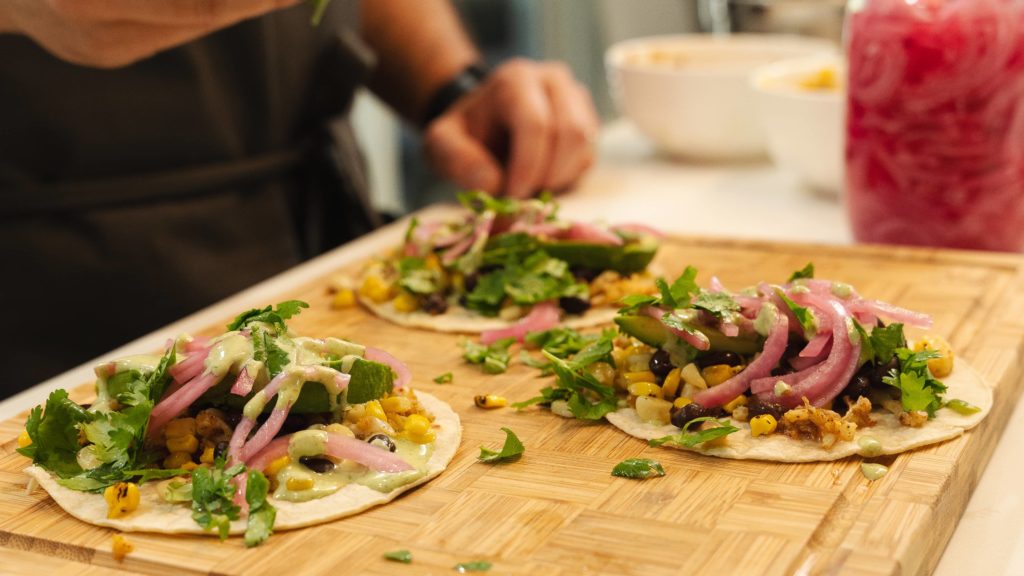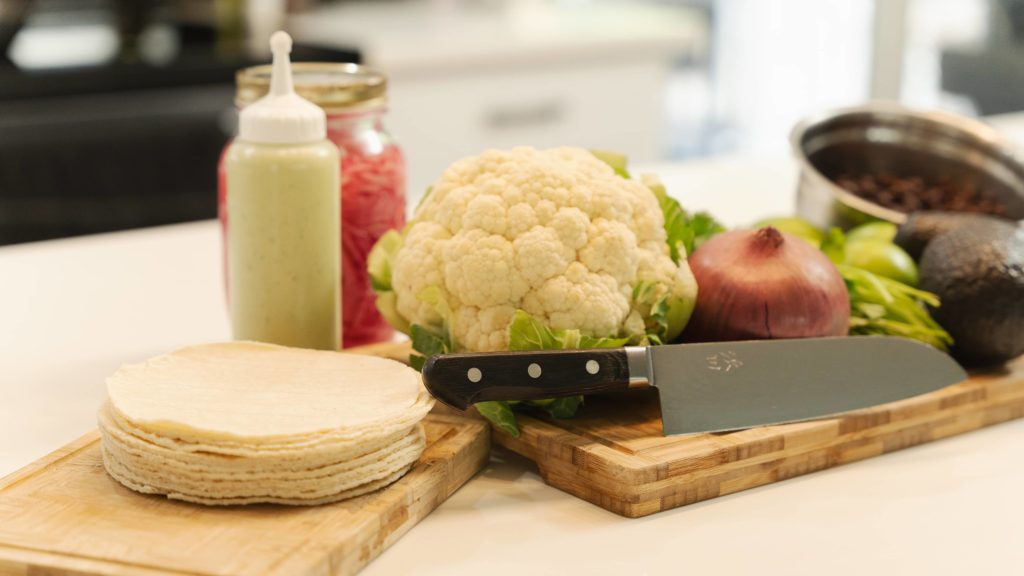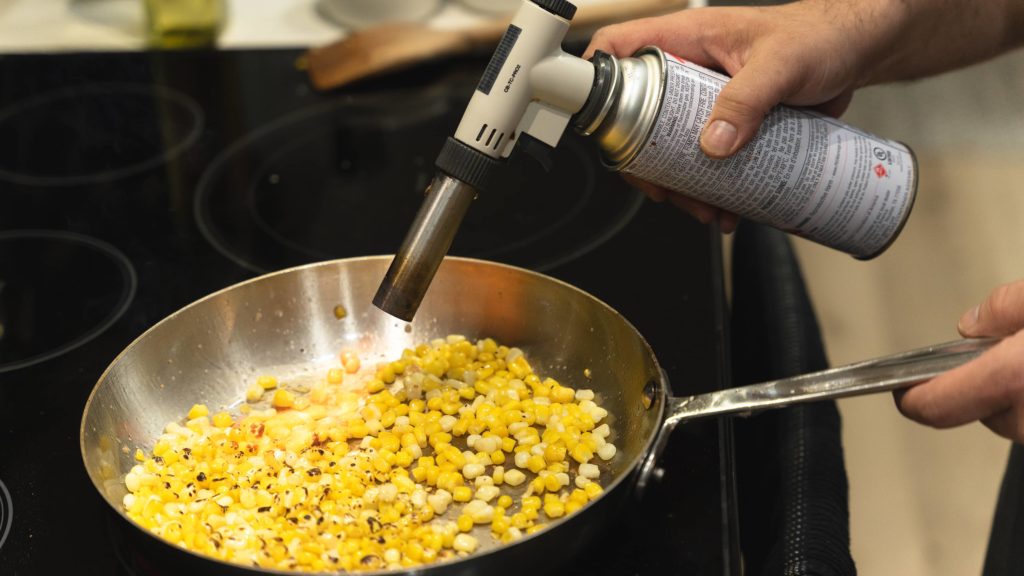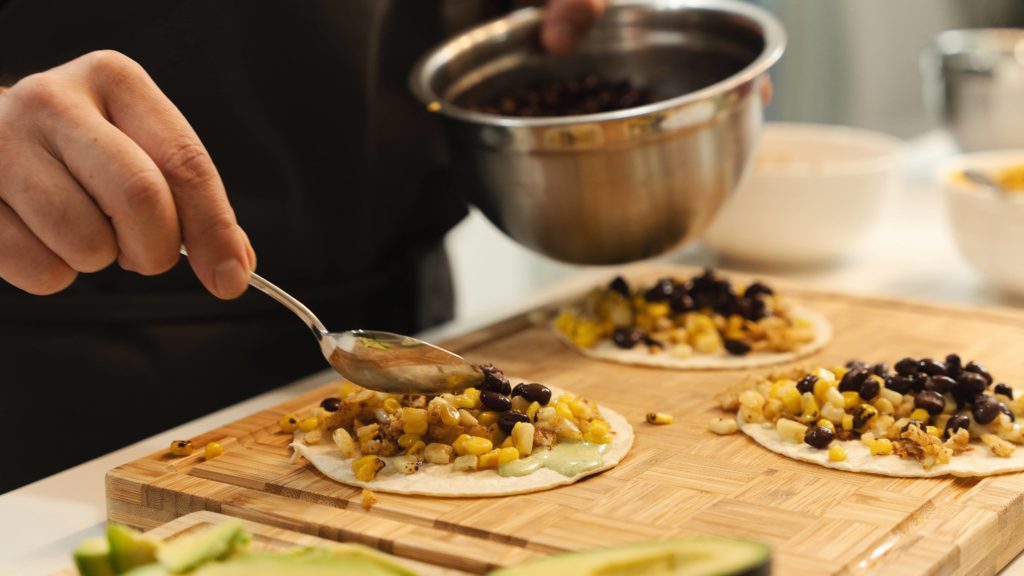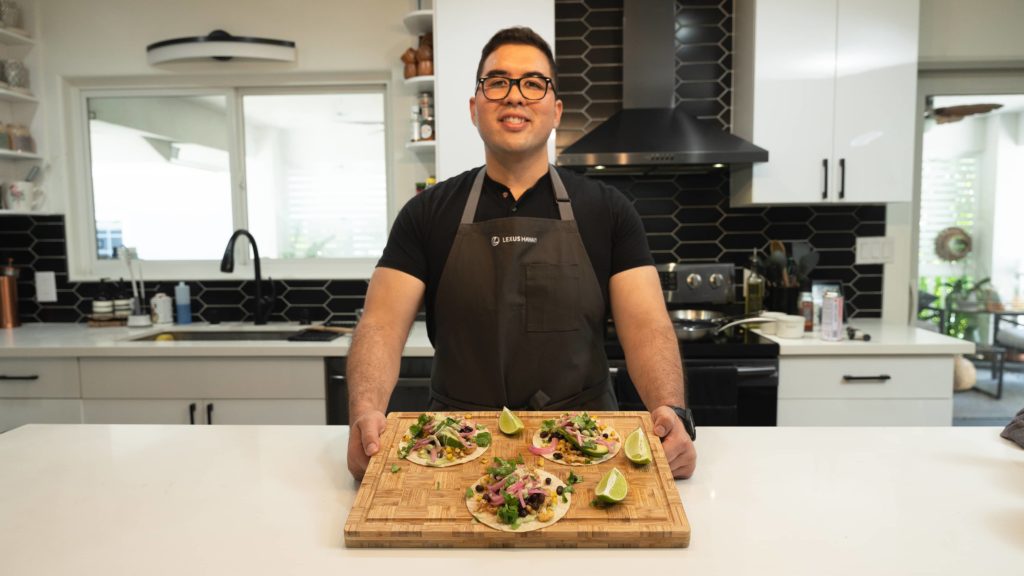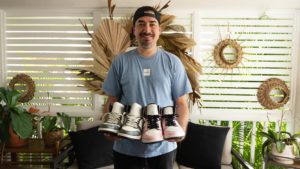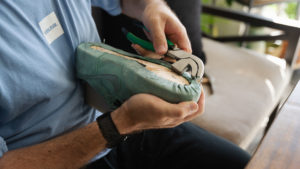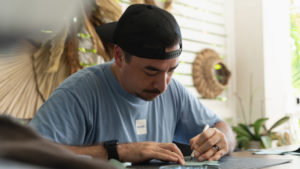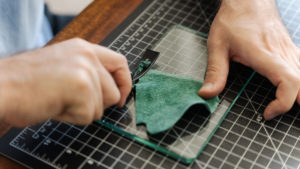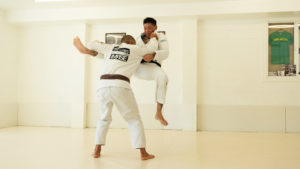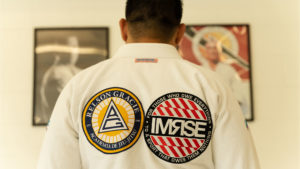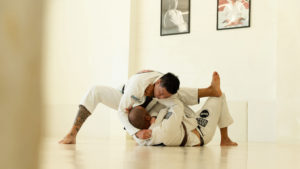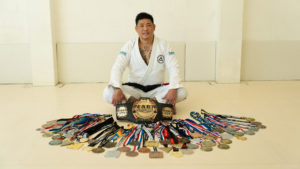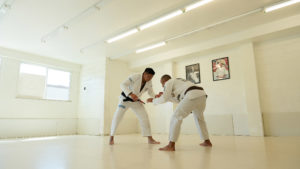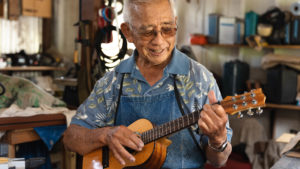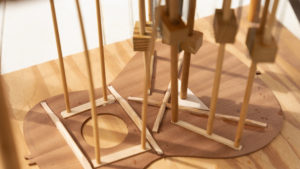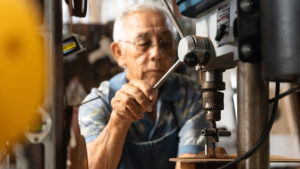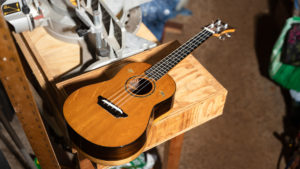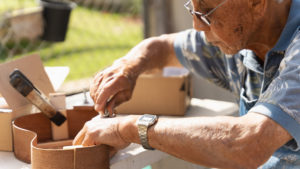For over 100 years, Servco’s success has been driven by bold innovation and a passion for excellence. Each day, talented Team Servco members put their heart and soul into the work they do, using creativity and great care to achieve their goals. Like the skilled takumi of Lexus, the diverse talents of our Team Servco members make us incredibly proud. We are honored to showcase five Team Servco members who through their pursuit of excellence in both service and craftsmanship, embody the takumi spirit.
Mike Hamada
Servco Lexus Honolulu | Sales Manager and Vegan Cook
“Growing up, I used to watch my mom and my grandma cooking in the kitchen,” says Mike, “it just felt natural being there.” Mike would watch them as they added ingredients and spices, usually without a recipe. “At our house, Food Network was always on,” says Mike, “playing in the background.” Over time, he learned to cook all of his family’s traditional dishes.
About seven years ago, in an effort to eat healthier, Mike’s sister introduced him to vegan cooking. That meant no meat, no dairy, no eggs. As a lifelong meat eater, Mike had to improvise to recreate some of the dishes he enjoyed. “I try to find things that have a similar texture,” says Mike, “like instead of scrambled eggs, I’ll crumble up tofu and season it. It comes out pretty close.”
For Mike, every day in the kitchen is a learning process. Through years of trial and error and tasting ingredients individually to know what will compliment a dish, Mike has been refining his craft. “When I’m cooking, if I know it’s missing the acidity and it’s an Italian dish, I usually add balsamic vinegar,” says Mike, “if I’m cooking Mexican or Spanish I’ll add lime or lemon, and if I’m cooking Japanese food, usually some kind of vinegar.”
When cooking for his family, Mike’s go-to vegan dishes include spaghetti bolognese, LA-style street tacos, and Thai and Indian curries. From loco mocos to chicken katsu, whatever Mike can imagine, he thinks up vegan ways to recreate it. “When meat eaters say they can’t tell if it’s vegan or vegetarian,” says Mike, “that’s when I know I did good.”
With all the health benefits he has gained, Mike sees being a vegan as a lifelong thing. He is driven to create new tastes, new flavors, and new concepts. And if he can share the vegan lifestyle with others through his cooking, he is happy to do that. “I enjoy making vegan dishes for my coworkers,” says Mike, “to show them that just because it’s healthy, it can still taste good.”
Jason Kawakami
Servco Lexus Honolulu | Service Consultant and Shoemaker
“I love the sound of the sewing machine,” says Jason, “for me it’s relaxing.” As a young boy, Jason often watched his grandmother sewing. The soothing whirr of the sewing machine still reminds him of their time together. As he got older, sewing became a part of his life. When Jason couldn’t find button down shirts he liked, he would sew his own. And when he couldn’t find shoes that matched his shirts, he decided he would sew those, too.
There were no shoemaking classes in Hawai‘i, so off to Los Angeles he went, immersing himself in an intensive 5-day shoemaking course. In the class, he learned to deconstruct a simple Adidas shoe, copy the pattern, and rebuild it using custom materials. At the end of the course, he was so proud of his sneakers that he wore them on his flight back to Honolulu.
Today, every pair of sneakers he makes is custom crafted. And every shoe is double-stitched, a painstaking technique that uses two evenly stitched lines running next to each other. It’s a part of the shoemaking process that demands a steady hand and a calm mind.
Always working to perfect his craft, Jason would practice his double-stitching on scraps of fabric, laying down line after line and curve after curve until each line was nice and tight. “I always feel stitching can improve no matter how good it looks,” says Jason, “you can always get better.”
Using a variety of leathers, canvases, and fabrics, along with his imagination and creativity, Jason spends 30 to 40 hours customizing a single pair of shoes. His favorite style, the Air Jordan 1, uses 25 different pieces, each needing to be patterned, hand cut, and stitched together in the proper order before the sole is glued on to complete the masterpiece.
Past designs include a Los Angeles Lakers-inspired purple and yellow shoe, and an over-the-top red glitter shoe that friends say looked like it was made for Dorothy in the Wizard of Oz. When asked which pair of shoes are his favorite, Jason says, “it’s the last pair I made because that one is always better crafted than the ones before it.”
While wearing his custom sneakers around town, fellow sneakerheads often take notice and ask him where he bought them. Jason tells them he made them himself. To which they say, “oh, you painted them?” “Oh no I cut them from scratch and sewed them together,” Jason would reply. Surely, his grandmother would be proud.
Justin Nihei
Servco Toyota Honolulu Pre-Owned | Sales Manager and Jiu Jitsu Black Belt
“It doesn’t matter what position or status you hold in life,” says Justin, “everybody’s equal when you step on the mat.” Justin was first introduced to jiu jitsu when he served in the U.S. Army, and he rediscovered the sport upon his return to Hawai‘i.
Even though Justin stands at a towering six-feet and four-inches tall, he was attracted to the idea that in jiu jitsu, a smaller person could defeat a bigger opponent using leverage and technique. Sometimes called human chess, jiu jitsu requires you to think through every move. “You don’t just brawl with someone,” says Justin, “you have to use good technique to strategically place your hand in certain positions that limit the other person’s opportunities.” A true game of inches, placing your hand even an inch off the mark can be the difference between victory and defeat.
Justin’s father also loved martial arts, so the sport gave the two men a common bond. “My dad was like my second coach,” says Justin, “he always reminded me that no matter what, be respectful to my opponents, my coaches, and my trainers.”
During Justin’s competition days, he would train five to six days a week, sometimes twice a day. Preparing for competition required extreme discipline with practice sessions, sparring, rest and recovery, a clean diet, strength and conditioning, and cardio. “When you go out and compete, it’s you out there on the mat,” says Justin, “but you have 15 to 20 people helping you prep for that so when you win, you win as a team.”
And win, he did. Traveling all over the world to compete, Justin amassed over 60 different medals and belts. He took bronze medals in the 2013 International Brazilian Jiu Jitsu Federation World Championships and the Pan-American Championships, two of the top international competitions. “Jiu jitsu has taught me perseverance,” says Justin, “it’s like a diamond, you have to keep polishing for it to shine through.”
Like his father taught him, being respectful also meant respecting the sport. In jiu jitsu, there is always something new to learn – a new technique, a new position, a new way to train. “Having a black belt doesn’t mean you’re perfect at it,” says Justin, “you have to keep that mentality that you can always learn something from somebody else. In jiu jitsu, knowledge is power.”
Charlie Ishii
Servco Toyota Honolulu | Lot Attendant and ‘Ukulele Maker
“Before I do anything, I tap the wood,” says Charlie, “and if it sounds hollow, I know it’s going to come out good.” Charlie learned to play the ‘ukulele after joining a popular hula hālau. He and his friend soon decided that they wanted to play ‘ukuleles made with their own hands.
The novice ‘ukulele players struck a deal: Charlie’s friend would go to ‘ukulele-making class to learn the process and Charlie would provide the tools and woodworking know-how. Using the techniques and patterns they acquired from the class, Charlie began to craft his own ‘ukuleles in his backyard workshop.
With his collection of saws, sanders, drills, routers and hand tools, Charlie would cut and shape each piece of wood following a template. And so that every hole, notch, and curve was perfectly placed, he built special jigs to simplify the process. “If you cut it wrong, you’re gonna spoil the wood,” says Charlie, “so you want accuracy when making an ‘ukulele.”
While every one of Charlie’s ‘ukuleles may look the same on the outside, the inside is where the magic happens. Charlie experiments with the direction and spacing of different tone bars to shape the sound the ‘ukulele will make. Using light spruce as the sound board (the top board where the hole is) and masterfully placed tone bars, Charlie is able to craft ‘ukuleles with a pure, lively sound.
Each ‘ukulele takes about 20 hours of meticulous work to go from ordinary pieces of wood to a shiny, perfectly varnished instrument. “Anything you do for the first time is hard,” says Charlie, “but in the long run it gets easier and easier.”
Always with an eye for detail, Charlie never lets a flaw get past him. “My father was a carpenter and I used to watch him work,” says Charlie, “so whatever I do now, I try to make it as best as possible.” It’s a challenge that Charlie looks forward to with every ‘ukulele he creates. “After you get done, if it looks nice and it sounds nice,” says Charlie, “that’s the challenge and that’s what I like.”


